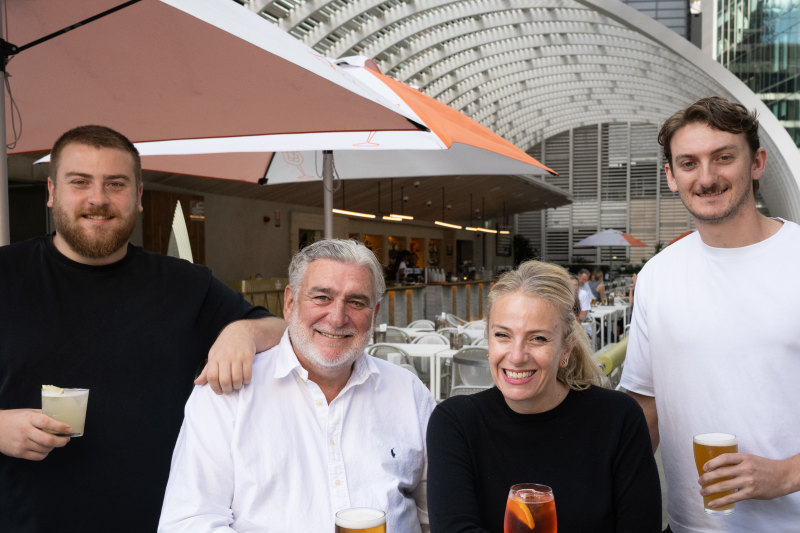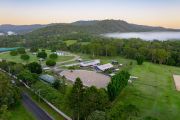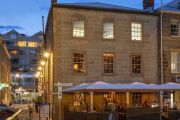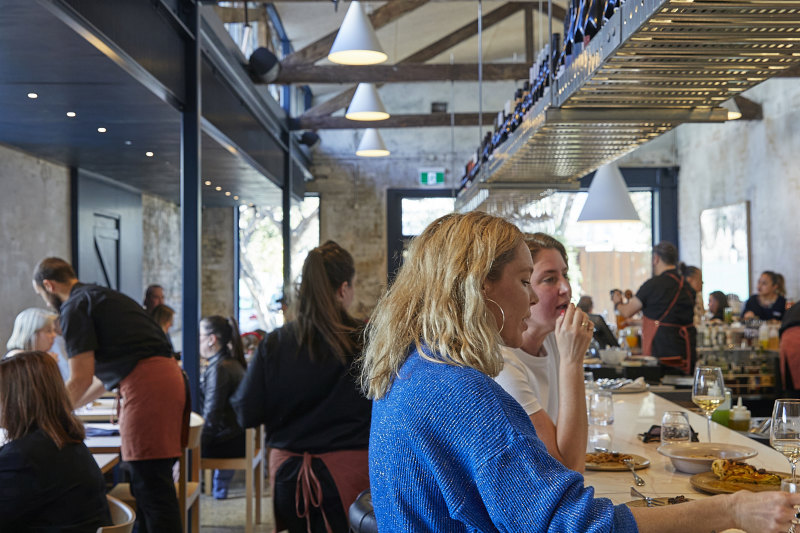
Utilitarian accommodation on Tasmanian wood-chip mill site goes against the grain
If this line-up of what appears to be conjoined dongers looks familiar – a bit like a mining camp – that’s OK because it’s what the architects intended you to see.
Hobart practice Gilby + Brewin Architecture wanted the new accommodation wing at Spring Bay Mill to appear as a utilitarian industrial structure. “Like it might have always been there.”
The studio won two awards at the weekend’s Tasmanian architecture awards for their efforts in delivering 12, corridor-connected cabins that are simple, stripped-back sleeping units as the latest part of the rehabilitation of a huge wood-chip mill site in coastal eastern Tasmania.
Fittingly, the Saturday night event that handed out prizes in 17 different categories was held at Spring Bay Mill. And although a doable 80-kilometre drive north-east of Hobart, those attending the 2022 awards were invited to stay over and make a weekend of it because that’s how a once-devastated landscape makes its living these days: as an events, conference, concert and glamping venue.
The “Ridge Quarters” – which won both the Commercial and Sustainable awards – are the latest contribution to the big project by the “light touch” architects Gilby + Brewin.
They’ve been working since 2013 with philanthropist and Wotif founder, Graeme Wood, who bought the defunct Gunns woodchip mill at Triabunna on Windlass Bay alongside Kathmandu founder Jan Cameron in 2011 (but went on to buy her stake in 2014).
Wood was determined to restore the 43-hectare site and repurpose as many of the defunct mill buildings as possible for public use.
The Gunns mill had been processing 100,000 trees a year into woodchips. And the spot where the mountains of shredded timber were stockpiled is where the new Ridge Quarters have been built, in part as a prefabricated structure that sets out to look externally “robust”.
Although having warm, woody and crafted interiors, and knockout water views on both sides, these unpretentious units are the very antithesis of the usual hospitality offerings. Spring Bay Mill’s promotional material boasts of seeking “to avoid the generic nature of hotels and luxury accommodation”.
Instead, Spring Bay Mill wanted a stayover to be “a visceral experience of this unique, regenerating post-industrial site”. In this robust winter weather, the glamping (with outdoor shower options), the beach shacks, and the external corridor of the very gently arching new Quarters construction certainly deliver on that pitch.
Since Spring Bay Mill, who wittily brand themselves as “a bunch of provocateurs”, really got going with the rehabilitation of what had been the world’s biggest woodchip plant exploiting Tasmania’s old-growth forests, the guiding principle has always been to fix the landscape – 12,000 native trees and shrubs have already gone into the ground to enhance the spectacular coastline setting and upcycle the structures that remain on the site.
Thus, the big circular crane platform has become a stage for the amphitheatre concert arena and rusting tin sheds have been adapted into a 230-seat performance and event space
Gilby + Brewin Architecture always argued for “tidying up” over tarting up or introducing “look-at-me” new elements. They’ve altered only where needed and amped up sustainable features wherever possible.
For the past two award seasons, the juries of the Tasmanian Chapter awards have rewarded their efforts. Last year Spring Bay Mill won three awards in the sustainable, heritage and public architecture categories.
Last weekend, they got two more prizes which elevates this major adaptive reuse project to the status of being one of the most awarded in Tasmanian AIA history and spotlights it nationally as a gold standard rehabilitation project that works for purpose without resorting to any of the usual architectural bells and whistles.










